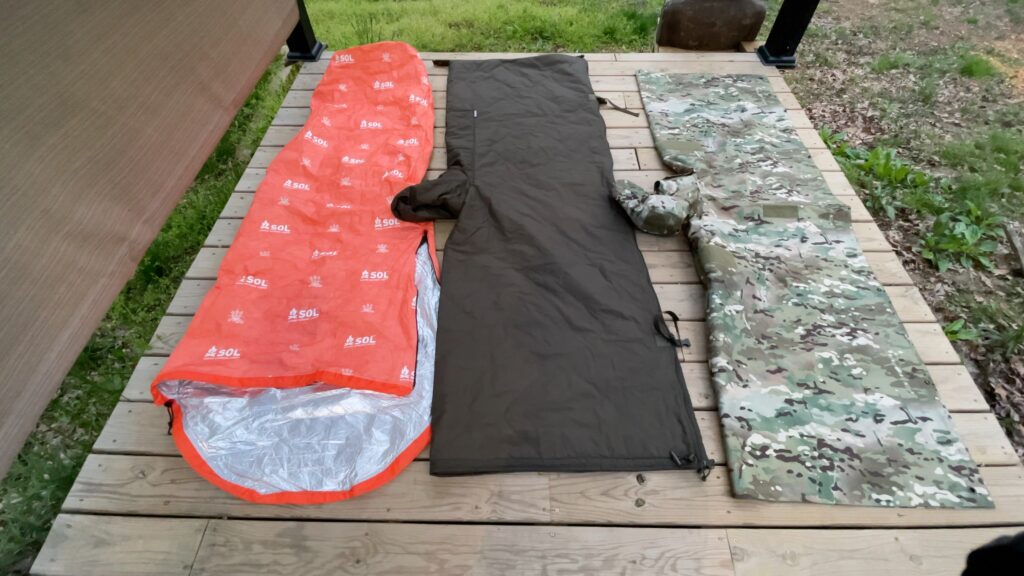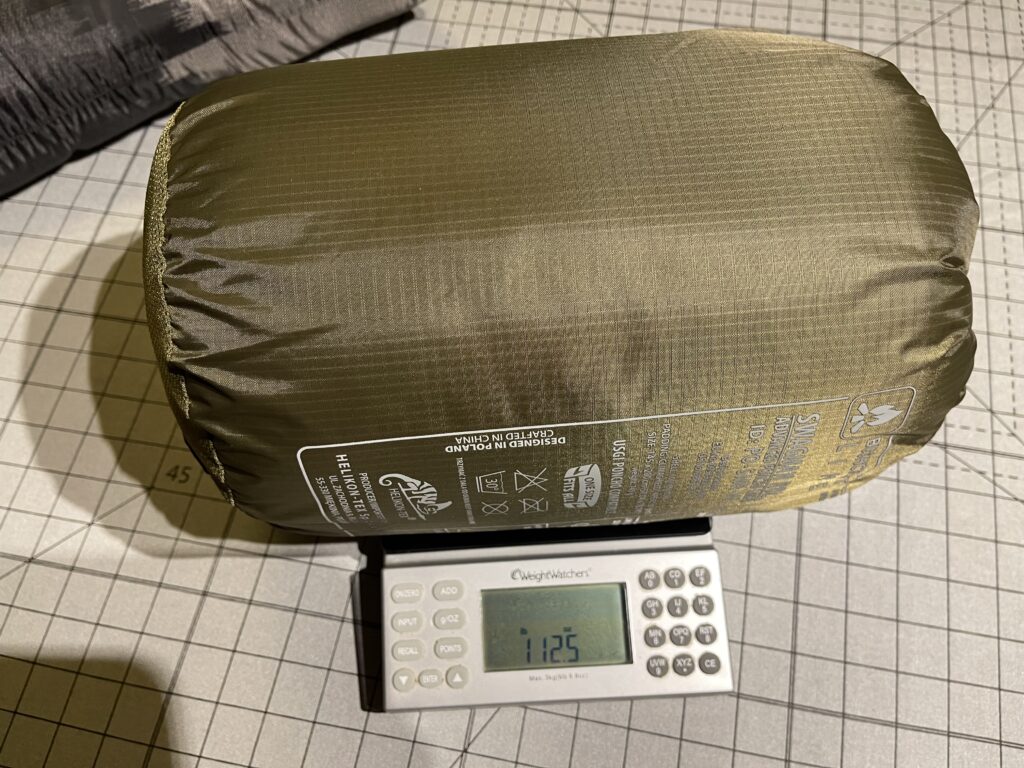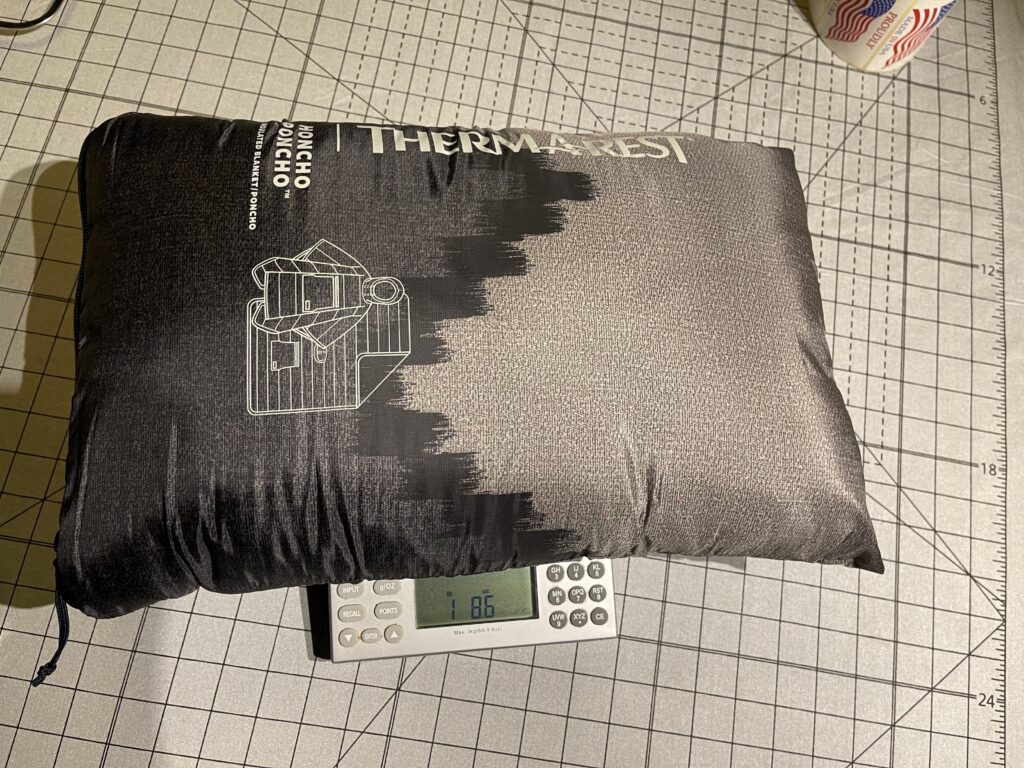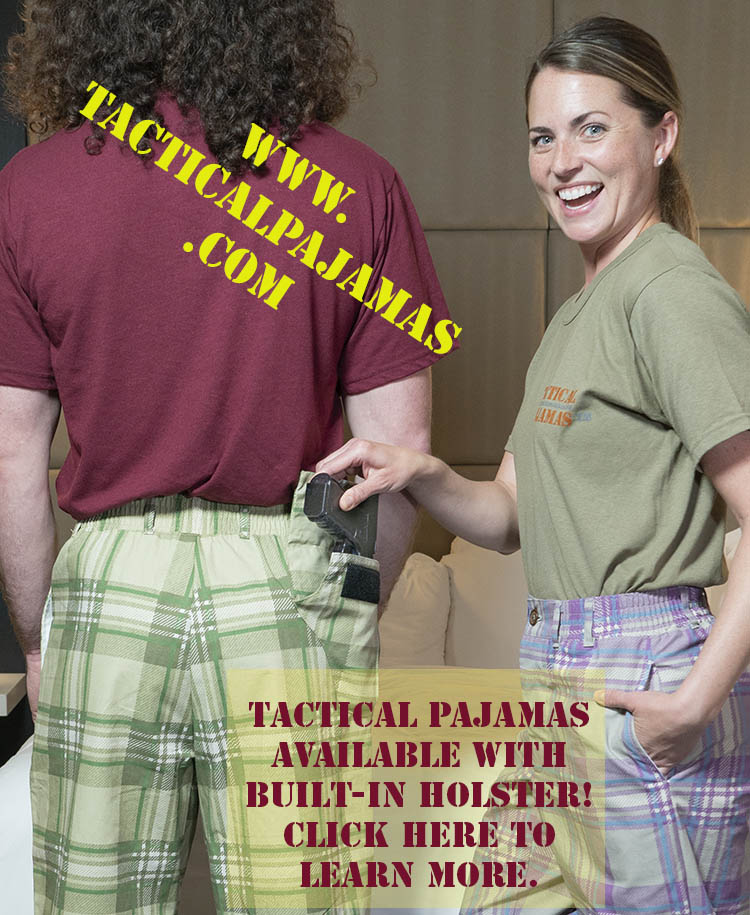Emergency/Survival Sleep Systems: Are Insulated Ponchos Any Good?
By P.J. Beaumont, Co-creator of Tactical Pajamas

When it comes to survival ponchos, the Helikon Swagman promises, a lot. It’s waterproof, insulated, breathable, and has a zipper that turns it from a garment to a summer-rated sleeping bag. But as a sleeping bag, how low of a temperature can you really use it in?
Also, how does it compare to its closest competitor, the Thermarest Honcho Poncho? And how much better do they perform when combined with the Gloryfire Breathable Poncho or the SOL Escape Bivvy?

Using a sleeping bag below its effective temperature can be very dangerous. You can get too cold while you sleep, and your core temperature can drop before you realize it. That’s why you must test your equipment before you need to use it, to find out its safety parameters.
I get cold very easily. If the temperature is below about 72 degrees F, I’ll need a sweater. I keep the AC in my house at 78 degrees, any colder and I’ll be uncomfortable. Therefore, it’s possible that any sleeping bag which keeps me warm down to a certain temperature might work for a normal person as much as five or ten degrees colder.
The SOL Escape Bivvy has a metallic lining on the inside that reflects heat back toward the user. This makes it a lot warmer than just a simple sleeping bag sleeve. It is somewhat breathable as well, which reduces condensation issues.
I tested the Helikon Swagman and several other kits on nights that ranged from 35 to 33 degrees, or just barely above freezing. I was wearing a long-sleeved yak wool t-shirt, a pair of Tactical Pajamas, wool socks, and a wool neck warmer. Here’s what I found.
SWAGMAN ALONE— Inside of a tent, by itself the Swagman kept me warm down to about 55 degrees. When I fell asleep and the temperature went down to 33, my core temperature was affected.
SWAGMAN WITH SOL ESCAPE BIVVY— When used with a cover, the Swagman was effective down to much lower temperatures, even when used without a tent and exposed to wind. With the SOL Escape Bivvy it kept my core temperature safe down to 35 degrees, and I would put the comfort rating at about 45 degrees. However, the Escape Bivvy isn’t as breathable as a regular sleeping bag, so condensation was an issue.
SWAGMAN WITH GLORYFIRE BREATHABLE PONCHO— When the Gloryfire is used as a cover for the Swagman, the combo is effective down to about 47 degrees. But similar to the Escape Bivvy, while the combo is breathable there is still some condensation. The Gloryfire does not completely seal up at the side, which reduces its heat-retention, and the side snaps do not hold well during tossing and turning at night.
THERMAREST HONCHO PONCHO WITH SOL ESCAPE BIVVY— Because the Escape Bivvy is closed all the way around the body, the open edge of the Honcho Poncho didn’t make as much of a difference. This combo performed almost as well as the Swagman/Escape combo.
THERMAREST HONCHO PONCHO WITH GLORYFIRE BREATHABLE PONCHO— The problem with this combo is the open sides and feet. While you could put the open side of the Honcho Poncho against the closed edge of the Gloryfire to help with this, you could still find yourself devoid of cover after a few tosses and turns while sleeping. Because of that, I wouldn’t trust this combo below about 55 degrees.
THERMAREST HONCHO PONCHO ALONE— Because the side snaps are weak and the side is not well-sealed, when used by itself the Honcho Poncho will not work nearly as well as the Swagman alone, even though the insulation capabilities of the fabrics are similar. I wouldn’t like to rely on just the Honcho Poncho much below 55 degrees, for comfort not much more than 60.
SOL ESCAPE BIVVY ALONE— Some people have sat in this bivvy in freezing weather for a few minutes and declared that they felt warm. I would not consider that to be a legitimate test. When you sleep your metabolism goes down, and you need a truly warm cover to keep in your heat. When combined with warm clothing, specifically an alpaca hoodie sweater, beanie, and regular wool long johns and socks, the SOL Escape did a decent job of keeping my core temperature OK while asleep down to about 52 degrees, and I would put the survival rating at at least five degrees lower. I found that the further I kept the bag from my body, the warmer I was. The places on your clothing that will touch up against the inside of the bag will get cold from conduction. If your metabolism runs high, wearing winter clothes inside this bivvy might keep you warm down to freezing, but be sure to test it first. Condensation might be an issue.
SOL ESCAPE BIVVY PLUS ALPACA WOOL LINER— Anything you can put inside the SOL Escape Bivvy will greatly increase its thermal capability, even if only by keeping your body further away from the fabric. Alpaca wool is reportedly several times warmer than regular wool, and I am a big fan of the fabric, having everything from alpaca wool socks to hoodies to vests. Appalachian Gear Company also puts out an alpaca wool sleeping bag liner. It is very stretchy and is not as confining as I thought it would be. It adds a good 10 degrees to any sleeping bag’s rating, so this combo seems to be good down to about 42 degrees F. (NOTE– The Appalachian Gear Company seems to have gone out of business. Big Agnes has a wool sleeping bag liner that has similar performance.)
MONITOR THE WEATHER. Have a thermometer available to check the temperature during the night. Remember that on clear, low-humidity nights the temperature will drop faster and further than on cloudy nights. If it’s crisp and 55 degrees F at sunset you stand a good chance of getting down near freezing by morning. Prepare your sleeping kit accordingly. If it’s 55 degrees and very cloudy, the temperature might not drop much, but remember that conditions can change radically if a weather front comes in.
PREPARE FOR WHAT THE TEMPERATURE WILL BE, not for what it is when you go to sleep. You might be perfectly warm at 45 degrees, but drop it by five and you could start shivering. If you use a sleeping system that’s a bit too warm for the temperature when you go to bed, open the zippers and stick your arms out to get cool at the beginning of the night, but make it easy to zip things up to retain warmth later on. That will cut down on perspiration, and thus condensation.
So what did I ultimately choose to keep in my bug-out bag? A Swagman and an SOL Escape Bivvy. Together with an Aqua-Quest 7’x10’ tarp, there isn’t too much in the way of weather that I’d need to be concerned with. In fact, for summertime backpacking excursions in Dolly Sods, where the weather can freeze any time of year, I’m thinking of switching to that combo (but with a tent and not a tarp— I don’t like waking up with rattlesnakes in bed with me). It’s lighter and smaller than a 35-degree sleeping bag, and on warmer nights I’ll only need to use one of them.


DIMENSIONS
SWAGMAN 56”x80”
GLORYFIRE 50”x80”
HONCHO PONCHO 58”x76”
